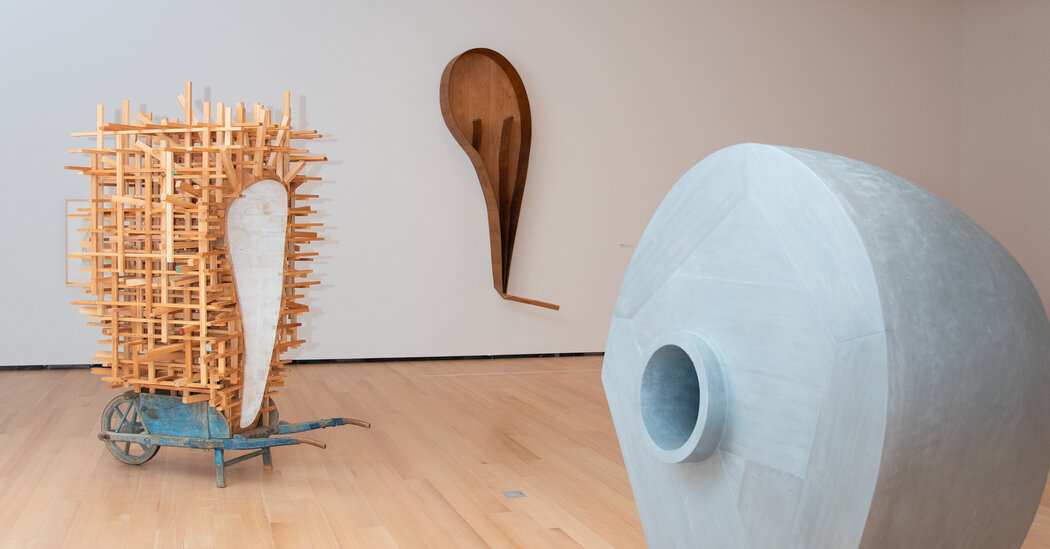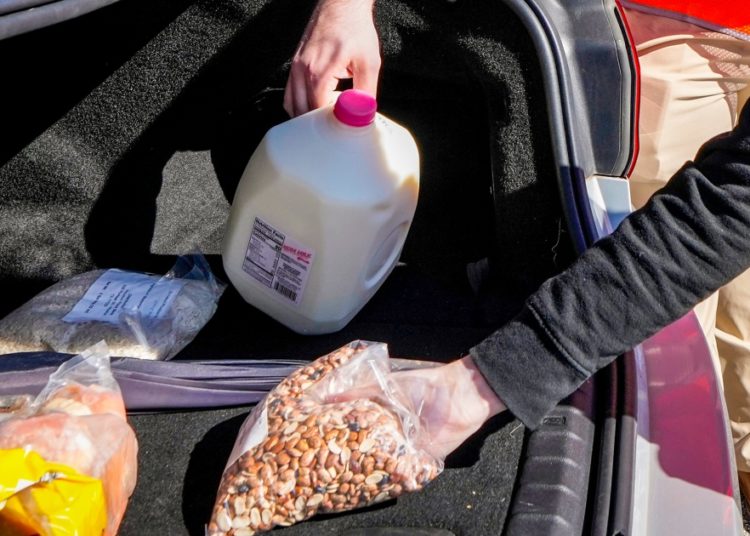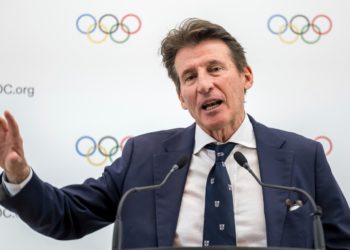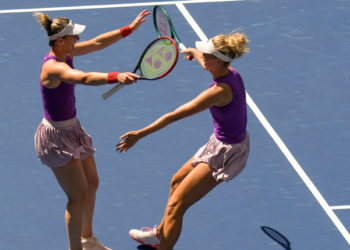In the first room of “Martin Puryear: Nexus” — a full-career survey of the sculptor’s work at the Museum of Fine Arts in Boston — is a set of white antlers, about 12 feet wide, mounted like a hunting trophy on an inverted wooden cross. It recalls the Irish elk, an ice age species whose males produced increasing amounts of testosterone to grow larger racks, allowing them to better compete for mates. Unable to carry the extra weight, the story goes, the breed became extinct.
But Puryear’s antlers, cast from lightweight aluminum and painted white, could practically float away.
The work is an elegant introduction to the contradictions in the oeuvre of this artist. Across the 50-odd works in “Nexus”— almost 30 sculptures, along with a rich selection of rarely shown prints and drawings — shapes soar and sink, suggest ponderous weight and lightness, shift between pure abstraction and references to the natural, cultural and political worlds and to art history. His ability to hold all of these incongruities in tension has secured him a place as one of the leading sculptors of his generation.
Though Puryear has worked in many materials — cast iron, rawhide, bronze, marble and glass appear in “Nexus,” and he has used brick, stone and thatch in his public artworks — many of his sculptures result from his long negotiation with wood. It’s a medium that is notoriously finicky, bending and warping in response to changes in temperature, humidity and the way it is cut. It has a mind of its own.
Puryear has spent a career learning its properties. Lessons were gleaned from village artisans in Sierra Leone, who worked without power tools to outfit the school where Puryear taught during his stint in the Peace Corps, in the mid-1960s, and from a master furniture maker whom he met in Sweden while there pursuing a master’s degree in printmaking. His lifelong study of French, Japanese, Korean, Scandinavian and West African artisans is likewise distilled in his elemental forms.
The post Martin Puryear Sees Sculpture as a Bodily Encounter appeared first on New York Times.




